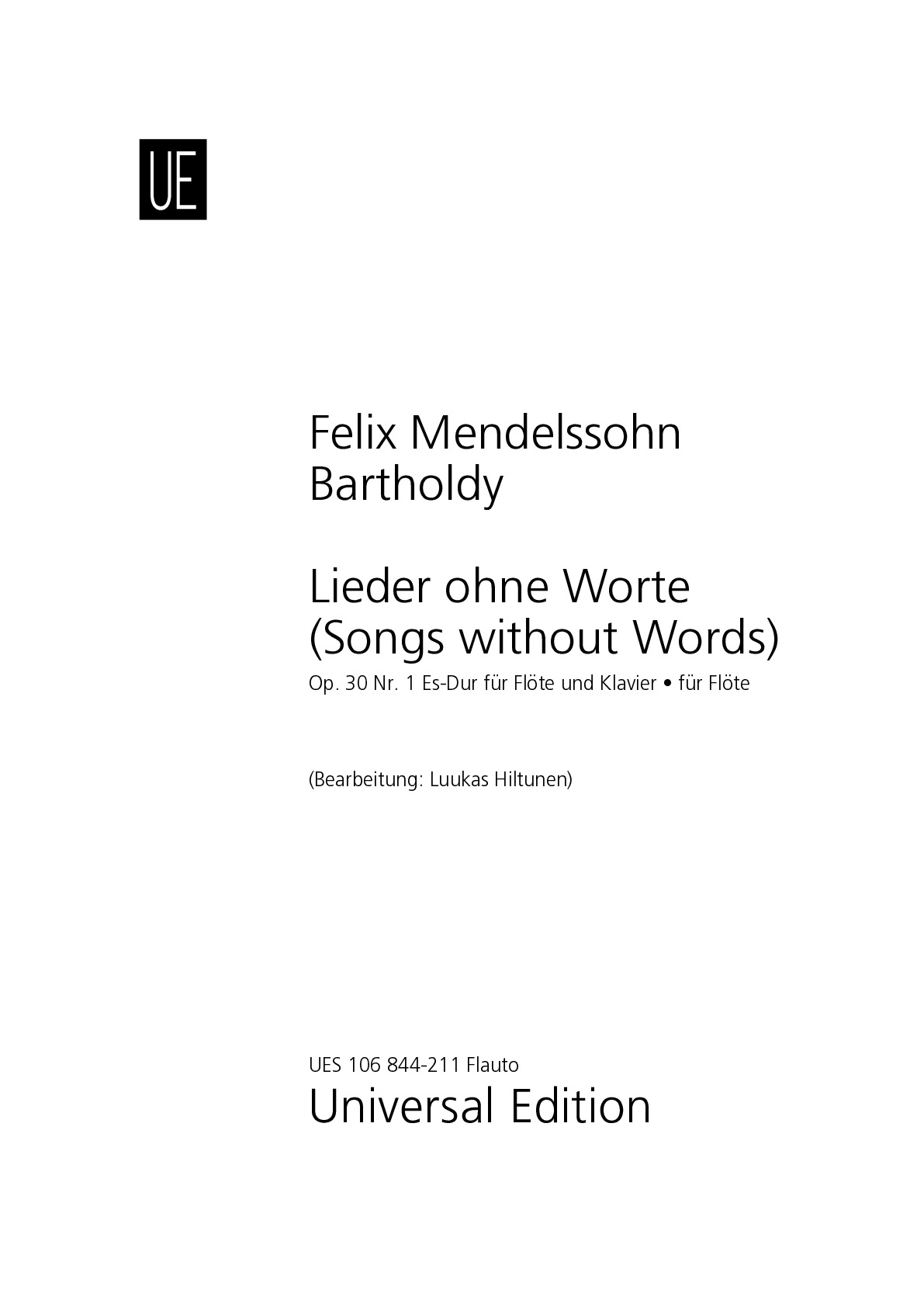.png)
Digital edition
immediately available as PDF
€7.95
Payments:
Shipping:
Felix Mendelssohn Bartholdy
Flöte (Lieder ohne Worte (Songs without Words))
Bearbeitung: Luukas Hiltunen
UES106844-211
Type: Stimme
Format: 210 x 297 mm
Pages: 8
Digital edition
immediately available as PDF
€7.95
Payments:
Shipping:
Description
Songs without Words (Lieder ohne Worte) is a series of short lyrical piano pieces composed by Felix Mendelssohn Bartholdy (1809–1847) between 1829 and 1845. The compositions were part of the tradition of lyrical short piano pieces of the Romantic period, although the specific concept of "Song without Words" was a new one. Mendelssohn's sister Fanny (1805–1847) composed a notable number of similar pieces, although she did not title them as such, and, according to some historians, was involved in the development of the concept. However, the title "Song without Words" is in all probability Mendelssohn's own invention.
The present Song in E flat major, Andante espressivo, MWV U 103, arranged here by our composer, Mr. Luukas Hiltunen, for flute and piano, is the first of the pieces in the second book of Op. 30, which Mendelssohn composed between 1833 and 1834. Op. 30 was the first volume to bear a dedication, to Elise von Woringen, a daughter of Düsseldorf’s judge at the Court of Appeal and supporter of composer. Although Mendelssohn himself did not arrange any of his Songs without Words for a solo instrument with a piano accompaniment, he did arrange a number of songs for piano duet, songs which later comprised the fifth volume and the first of the sixth. Many others have made various arrangements of individual songs, including for orchestra, chamber ensemble, or solo instrument with piano accompaniment. One such example is the arrangement of 22 of the songs by Mendelssohn's student, the German violist Friedrich Hermann (1828–1907), for violin and piano.
Mr. Hiltunen decided to approach the arrangement with the idea of how Mendelssohn himself would have adapted his Song for flute and piano. Through his nearly four-year reconstruction process, on the composer's unfinished Sixth Symphony in C major (UES 105 872), Mendelssohn's musical language and way of composing became internalized, which is why the arrangement was accomplished effortlessly in about one week. A straightforward transposition of the original to solo instrument with the melody-accompaniment principle hardly ever produces a satisfactory outcome, which is why it was decided to extend Mendelssohn's Song with an introductory passage, a recita-tive section in the coda and an extended conclusion.
More information
Type: Stimme
Format: 210 x 297 mm
Pages: 8

